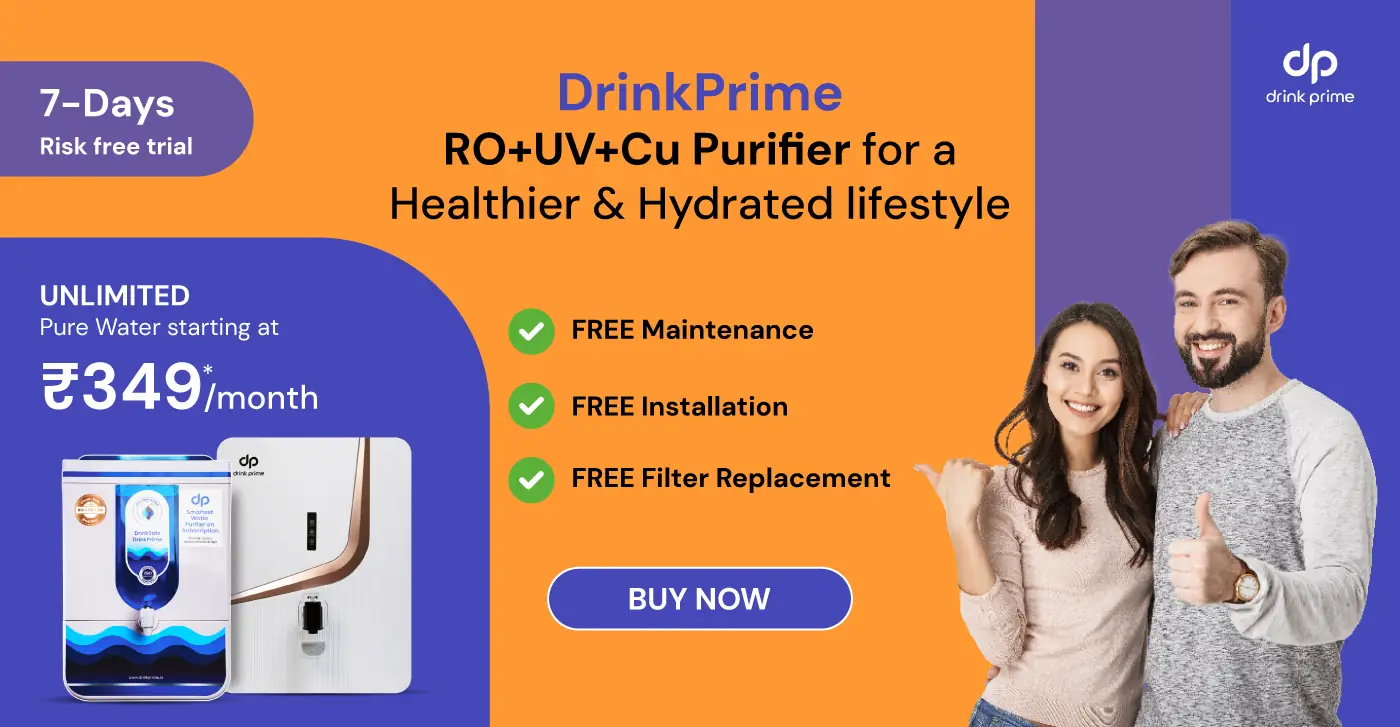Presently, with rising concerns around water quality, water purifiers have become more important for almost all households across urban and semi-urban areas. While they improve health outcomes and lower dependence on packaged water, their usage also raises environmental concerns. In this blog, we will explore the environmental factors of how water purifiers impact the environment and what kind of water purifiers are environmentally friendly as well.

Hidden Environmental Impact of Water Purifiers
1. Water Waste with RO System
One of the major concerns is wastage in the RO system, and it often discards a significant portion of the input water as reject or wastewater. For many household RO units, for every litre of purified water produced, multiple litres may be wasted. Also, in water-scarce regions like many parts of India, this can be environmentally problematic.
2. High energy consumption
Most of the electric water purifiers that use RO, UV lamps, pumps, etc, consume electricity, and if that electricity comes from fossil-fuel-based sources, the water purifier’s ongoing energy usage contributes to greenhouse gas emissions.
3. Plastic and component waste from cartridges and filters
The process of making water purifiers involves plastics, membranes, carbon filters, and electronic components that consume materials and energy, which are often based on non-renewable resources. Moreover, transportation, packaging, and disposal further increase the environmental footprint. Thus, while water purifiers effectively reduce plastic bottle waste and contamination risks, they shift the environmental burden elsewhere to water waste, energy consumption, and material waste.
Comparing Purifier Types: Which Are More Environmentally Friendly?
1. Gravity-based / UF / Carbon / Non-electric filters
Gravity-based, UF, and carbon filters are generally much more eco-friendly because they usually operate without electricity, and they do not produce wastewater, since these water purifiers do not completely rely on physical or chemical adsorption, but rather on a pressure-based membrane separation. Additionally, the filter media, like activated carbon, do require certain periodic replacements; these systems are much simpler and use fewer components as well, resulting in overall waste and energy footprints when compared to multi-stage RO water purifiers, and for households receiving treated municipal water with low TDS, and these non-electric systems are much more often than adequate to deliver safe, clean drinking water.
2. UV-based purifiers
There are UV purifiers that make use of ultraviolet light to deactivate bacteria, viruses, and other microbes as well, which makes them effective for microbial purification even though they do not remove dissolved solids, because such water purifiers don’t rely on pressure-based filtration. UV systems typically do not produce wastewater, which helps reduce their environmental impact. But they do require electricity to power the UV lamp, and their performance can be affected by factors like turbidity and overall water quality. For Indian households that receive relatively clean water but still need protection from microbial contamination, UV purifiers offer a practical balance between safety and a low environmental footprint.
3. RO-based purifiers
Most of the RO-based water purifiers provide the highest level of water purification, effectively removing all the dissolved salts, heavy metals, various chemicals, microbes, and turbidity from water. But this advanced water purification comes with several environmental costs as well. RO systems generate substantial wastewater during the filtration process and consume more electricity, relying on several components that must be disposed of periodically. The frequent replacement of filters and membranes adds to plastic and composite waste that is difficult to recycle. Additionally, RO purification removes not only harmful substances but also beneficial minerals, often requiring remineralisation to restore the water’s natural balance.
How DrinkPrime Fits Into the Eco Conversation
DrinkPrime fits into the eco conversation by promoting a practical alternative to bottled water while making sure that there is consistent access to safe, healthy, and clean drinking water, and its rental-based model helps in reducing the number of single-use plastic bottles and water cans that typically contribute to waste and carbon emissions from transportation. Moreover, this rental-based model includes free maintenance, filter changes, and servicing, so you don’t have to take on the burden or stress of maintenance or filter changes.
Get 7 Days Risk Free Trial
Conclusion
In summary, water purifiers play an important role in making sure that you get access to safe drinking water, especially in areas where water quality can vary dramatically. But the choice of purification technology has certainly impacted the environment, while RO systems offer the highest levels of water purification, which comes with several disadvantages, like higher electric consumption, wastewater generation, and non-recyclable components as well. On the other hand, UV and gravity-based water purifiers present more eco-friendly alternatives for households with suitable water quality. The key factor lies in selecting a water purifier that matches your water sources while keeping environmental impact in mind. And this balance becomes even more important as Indian households grow increasingly conscious of sustainability. DrinkPrime, smart water purifier contributes to this shift as it offers a rental-based model that effectively reduces the complete dependence on bottled water, lowers plastic waste, and make sure that there is proper maintenance, which helps households make informed choices.



